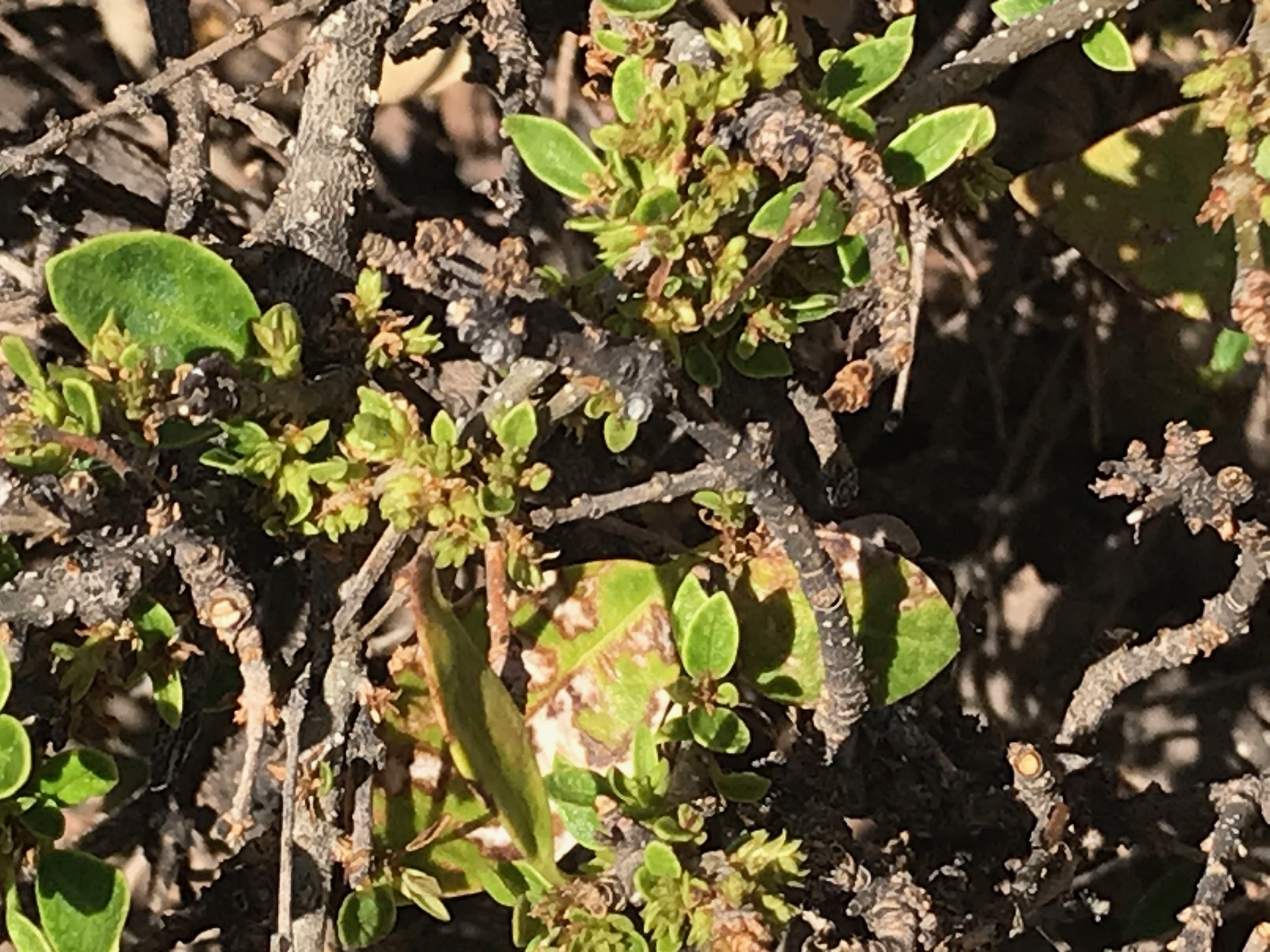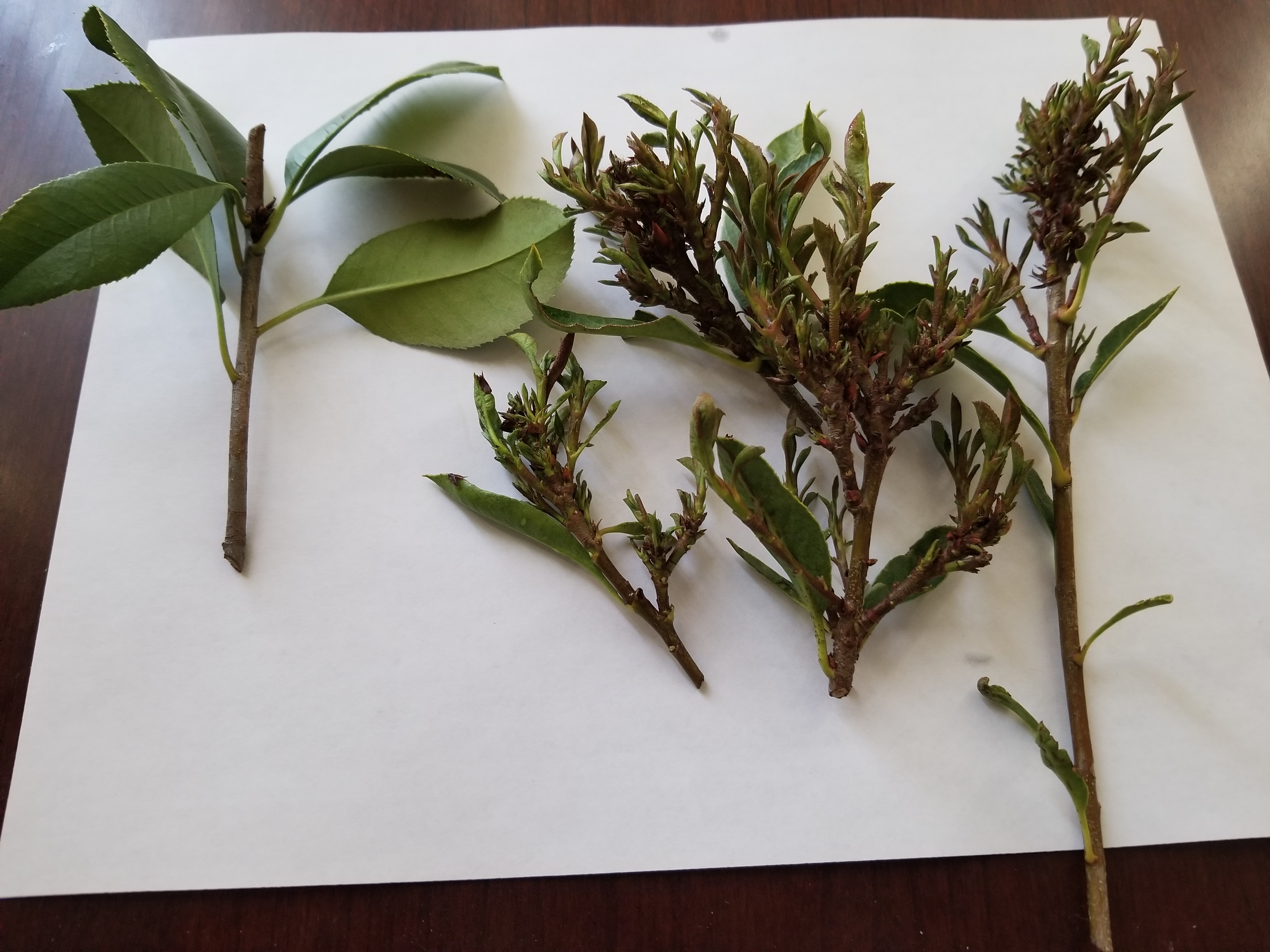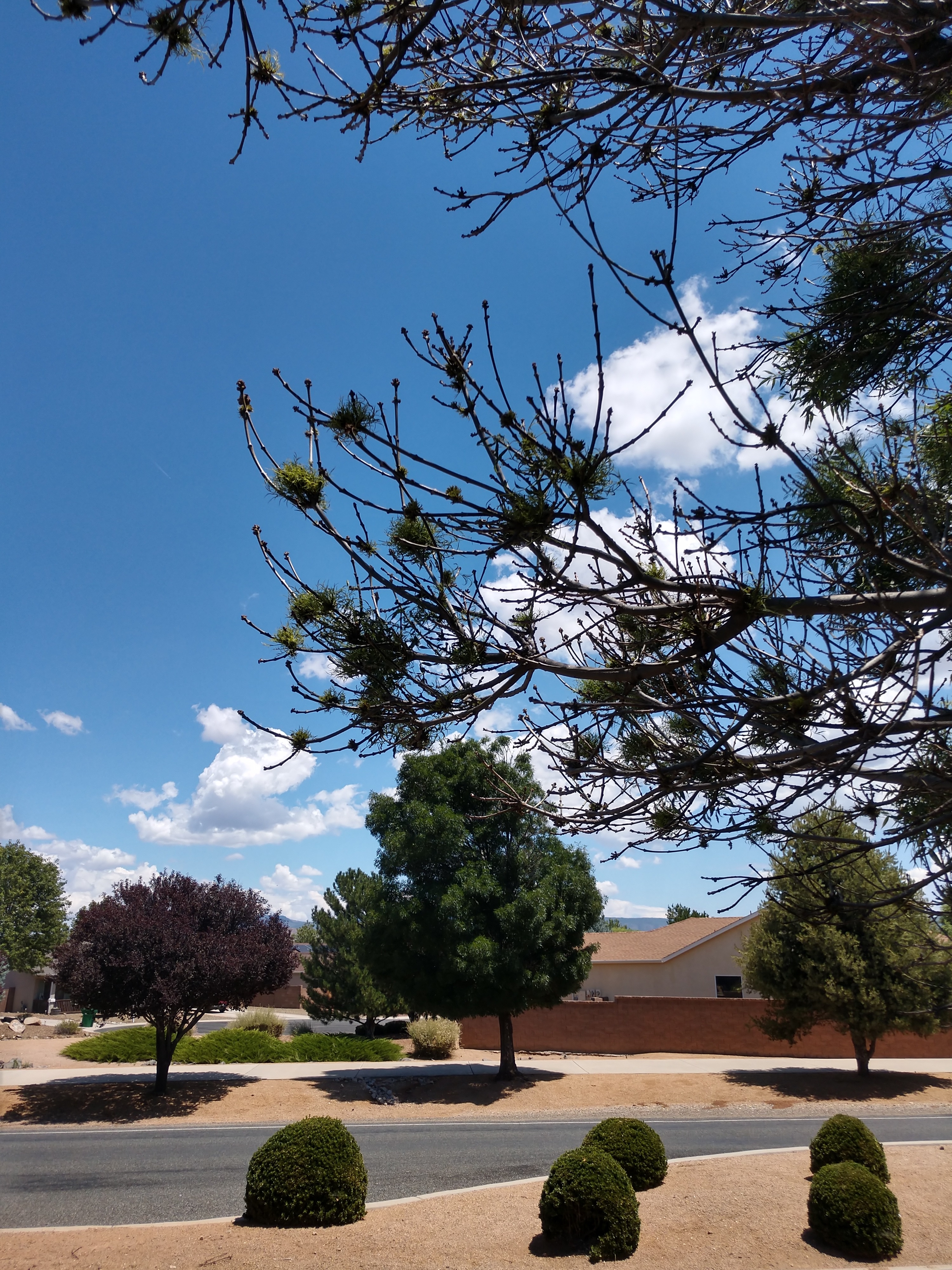 New Herbicides Can Damage Landscapes - September 2, 2020 Jeff Schalau, Agent, Agriculture & Natural Resources University of Arizona Cooperative Extension, Yavapai County In the last few years, Cooperative Extension has received several questions about trees and shrubs displaying dieback, non-typical growth, decline, and sometimes death. Most of these calls were related to new herbicides containing the widely used active ingredient called glyphosate in combination with imazapic or imazapyr. In most cases, homeowners used these products to manage weeds on gravel driveways or bare ground/decomposed granite landscaped areas planted with trees and woody shrubs. Glyphosate is a widely used herbicide used to manage perennial weeds in residential and agricultural settings. Toxicologists at the Environmental Protection Agency (EPA) agree that glyphosate is safe for homeowner use and has a low toxicity for humans. Once glyphosate is applied and taken up by the plant, any remaining pesticide residue is rapidly degraded by bacteria in the soil. Glyphosate alone has no residual soil activity and consumers that used it usually obtained desirable results. Glyphosate has also been vilified by some for its widespread use in agriculture and the genetic modification of crops bred to be resistant to it. This is an entirely different situation and should be viewed a separate issue than glyphosate’s use in landscapes. Keep in mind that the small amounts and intermittent applications used in landscapes manifest a much lower risk than amounts and frequency used in production agriculture. I know I’ll receive blowback from some readers for promoting glyphosate’s use, but this is the current state of the science and the point here is: glyphosate can be safely used by homeowners to manage perennial weeds without damaging non-target plants. As stated above, imazapic and imazapyr are now mixed with glyphosate to produce longer lasting weed control. Imazapic and imazapyr are part of an herbicide group called imidazolinones. They are powerful herbicides that inhibit the enzyme acetolactate synthase (ALS): a critical enzyme system in plants. These non-selective herbicides are used to manage a broad range of weeds in aquatic and terrestrial environments. In aquatic ecosystems, the imazapyr/imazapic is quickly degraded by sunlight. In soil, however, the active ingredient may persist for as much as one year. In alkaline soils (found in most of Arizona and the western U.S.), imazapic and imazapyr do not bind to soil, can easily be moved by water flowing through the soil, and can be absorbed by plant roots that happen to be in the vicinity. This results in the undesirable symptoms and plant losses described above. Symptoms of imazapic/imazapyr injury on ornamental plants include: abnormal, tufted growth that never elongates (called witches broom); “strappy” or twisted new growth; defoliation; and death. Different plant genera may display slightly different symptoms, but symptoms are often found on several unrelated plant species in the landscape. When Cooperative Extension is asked to diagnose the above described damage, the homeowner is usually unaware that they have inadvertently applied a potentially damaging herbicide. After consulting the product label, we usually discover they are using one of these new formulations which includes either imazapic or imazapyr. This creates an opportunity to remind the homeowner that when they purchase and use any pesticide, it must be used according to label directions. Failure to do so in violation of the law. Labels of these new formulations clearly state that nearby plants may be injured if applied near desirable plant root systems and that water can transport the herbicide downslope. All registered pesticides must have an ingredient statement on the label which display the active ingredients contained therein. If you see imazapic/imazapyr on the label, you might want to reconsider using it. In my opinion, these products should not be used in residential landscapes. Readers may want to visit their garage or tool shed to verify what they have purchased. Homeowners that want to maintain bare ground will need to spot spray with an appropriate herbicide and apply pre-emergent herbicides twice per year (fall and spring). The other option is to develop a drought-tolerant plant community that will resist weeds. Where water, soil, and plant nutrients are present, plants will try to grow. Why not select drought-tolerant grasses and native forbs that will occupy the space and not require constant inputs of herbicides? I intentionally left out specific product names but some of these are included in the additional resources with the online edition (see URL below). You can follow the Backyard Gardener on Twitter – use the link on the BYG website. If you have other gardening questions, email the Master Gardener Help Desk in Prescott (prescottmg@gmail.com) or Camp Verde (verdevalleymg@gmail.com) and be sure to include your name, location, and phone number. Find past Backyard Gardener columns or provide feedback at the Backyard Gardener web site: https://cals.arizona.edu/yavapai/anr/hort/byg/. Images  Waxleaf privet (Ligustrum japonicum ‘Texanum’) damaged by imazapyr showing “tufted growth” (photo by Cooperative Extension client).
Waxleaf privet (Ligustrum japonicum ‘Texanum’) damaged by imazapyr showing “tufted growth” (photo by Cooperative Extension client). Red tip photinia (Photinia fraserii) showing normal growth on left and foliage slightly damaged by imazapyr showing reduced elongation on right (photo by Cooperative Extension client).
Red tip photinia (Photinia fraserii) showing normal growth on left and foliage slightly damaged by imazapyr showing reduced elongation on right (photo by Cooperative Extension client).  Raywood ash (Fraxinus oxycarpa ‘Raywood’) possibly damaged by imazapyr showing “witches brooms” with normal looking Raywood ash in the center background (photo by Jeff Schalau, University of Arizona).
Raywood ash (Fraxinus oxycarpa ‘Raywood’) possibly damaged by imazapyr showing “witches brooms” with normal looking Raywood ash in the center background (photo by Jeff Schalau, University of Arizona).Additional Resources Herbicide Damage to Woody Plants, University of Florida/IFAS Extension blogs.ifas.ufl.edu/monroeco/2019/08/23/herbicide-damage-to-woody-plants/ Roundup is Roundup…Right?, Colorado State University Extension, CO-Horts Blog csuhort.blogspot.com/2013/06/roundup-is-roundupright.html Using Herbicides Safely Around Trees, University of California Agriculture and Natural Resources ucanr.edu/blogs/blogcore/postdetail.cfm?postnum=24291 Acetolactate Synthase (ALS) Inhibitors, North Carolina State University Extension content.ces.ncsu.edu/acetolactate-synthase-als-inhibitors Common Landscape Herbicides and Their Effects on Trees, Mississippi State University Extension extension.msstate.edu/sites/default/files/publications/publications/p3273.pdf |